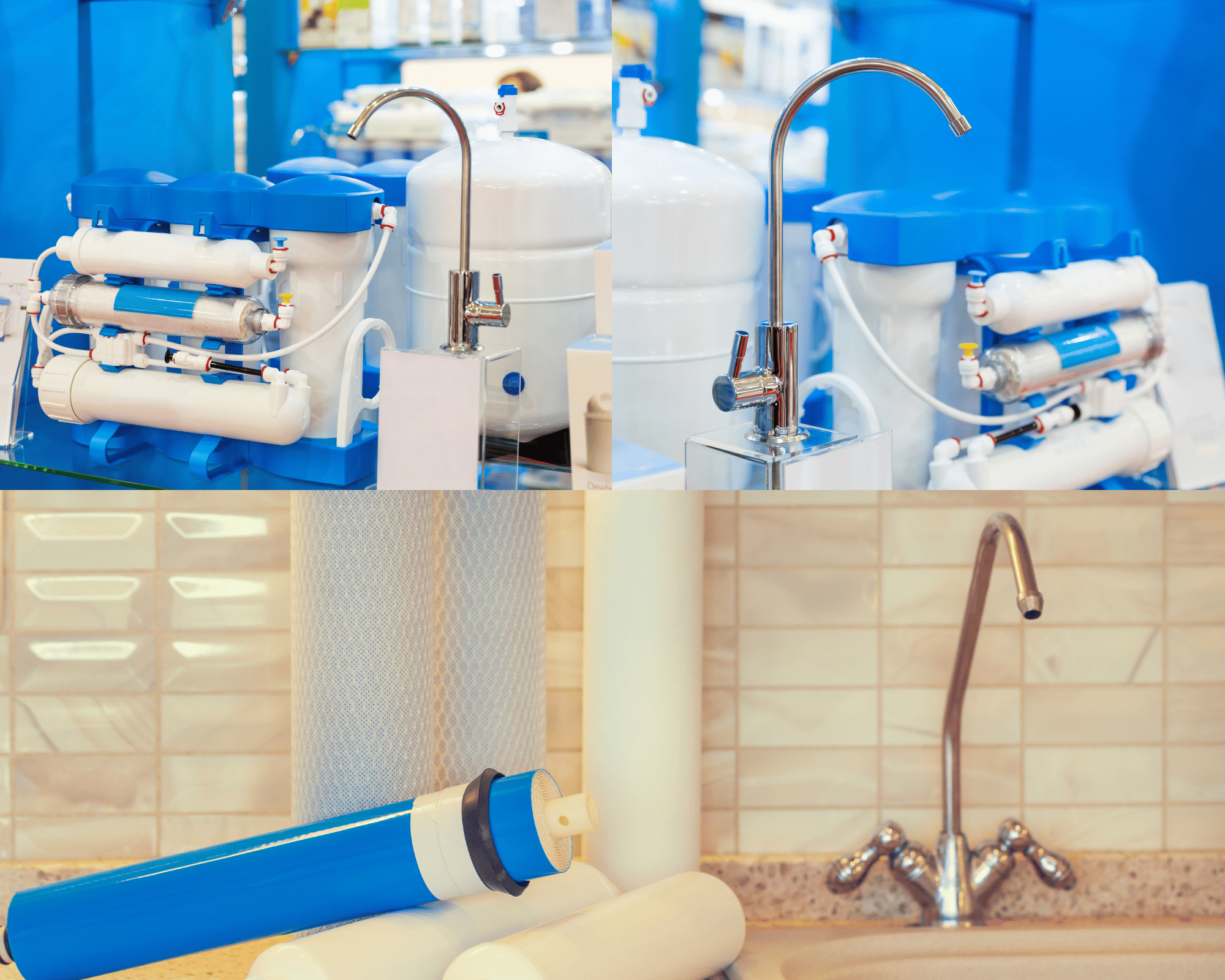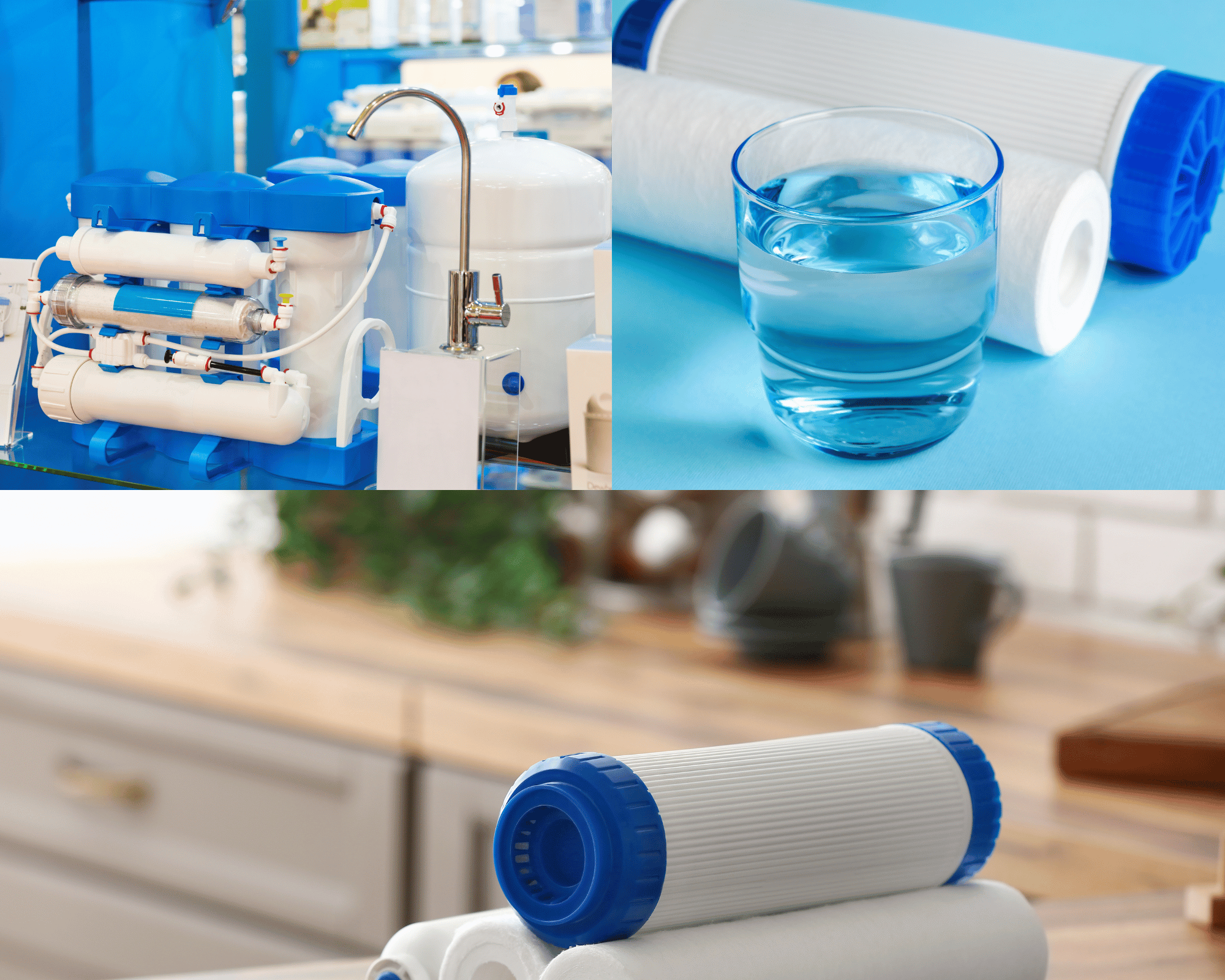Water filtration systems, such as carbon water filters, are like the unsung heroes of your kitchen, quietly working behind the scenes to ensure you have access to clean, fresh water. These filters use activated carbon to remove impurities and contaminants, making your water taste better and safer to drink. But how do they work their magic? Activated carbon has a large surface area that traps particles and absorbs impurities, much like a sponge soaking up spills. This process effectively reduces chlorine, sediment, volatile organic compounds (VOCs), and other pollutants.
Key Takeaways:
- Learn how to easily install your carbon water filter with this simple step-by-step guide.
- Keep your carbon water filter working like new with essential maintenance tips.
- Ensure fresh water for longer by understanding when and how to replace your carbon water filter.
Understanding Carbon Water Filters
Carbon water filters are like the unsung heroes of your kitchen, quietly working behind the scenes to ensure you have access to clean, fresh water. These filters use activated carbon filters to remove impurities and contaminants, making your water taste better and safer to drink. But how do they work their magic? Activated carbon has a large surface area that traps particles and absorbs impurities, much like a sponge soaking up spills. This process effectively reduces chlorine, sediment, volatile organic compounds (VOCs), and other pollutants.
Imagine your water filter system as a diligent gatekeeper, allowing only the purest water to pass through. It’s crucial to understand that while these filters are highly effective, they do have a lifespan. Over time, the carbon becomes saturated with impurities and loses its ability to filter effectively. This is why regular maintenance and timely replacement are key to ensuring your filter continues to perform at its best.
What is a Carbon Filter?
A carbon filter is a type of water filter that uses activated carbon to remove impurities and contaminants from water. Activated carbon is a highly porous material that attracts and traps chemicals, heavy metals, and other impurities, significantly improving the taste, odor, and overall quality of your water. These filters are a staple in home filtration systems, including whole house systems, ensuring that every drop of water in your home is clean and safe to drink. Whether it’s for drinking, cooking, or even bathing, carbon filters play a crucial role in maintaining high water quality.
Benefits of Water Filters
Water filters offer numerous benefits for homeowners, making them a valuable addition to any household. Here are some of the key advantages:
- Improved Water Quality: Water filters effectively remove impurities and contaminants, ensuring that your water is safe to drink and use for cooking and hygiene.
- Better Taste and Odor: By eliminating chlorine and other chemicals, water filters can significantly improve the taste and odor of your water, making it more enjoyable to drink.
- Increased Appliance Lifespan: Water filters help extend the lifespan of home appliances, such as water heaters and dishwashers, by removing minerals and contaminants that can cause damage over time.
- Reduced Maintenance: With fewer impurities in your water, your appliances and plumbing system require less frequent maintenance and repairs, saving you time and money.
- Peace of Mind: Knowing that your water is clean and safe to drink provides peace of mind for you and your family, ensuring that you are protected from potential health risks.
Choosing the Right Carbon Water Filter
Choosing the right carbon water filter can be overwhelming, but here are some factors to consider to make the process easier:
- Filter Type: There are two main types of carbon filters: activated carbon and catalytic carbon. Activated carbon is more common and effective for general use, while catalytic carbon is more specialized and often used for specific contaminants.
- Filter Size: Ensure the filter you choose is compatible with your home’s water supply and plumbing system. The right size will ensure optimal performance and ease of installation.
- Contaminant Removal: Consider the specific contaminants you want to remove from your water, such as chlorine, lead, or volatile organic compounds (VOCs). Different filters are designed to target different impurities.
- Maintenance Requirements: Some carbon filters require more maintenance than others. Be sure to check how often you’ll need to replace filter cartridges or clean the filter media.
- Certifications: Look for filters that are certified by reputable organizations, such as NSF International or the Water Quality Association. These certifications ensure the filter meets high standards for contaminant removal and overall performance.
How to Install a Carbon Water Filter: A Step-by-Step Guide
Installing a carbon water filter might seem like a task for a seasoned plumber, but with a little guidance, you can tackle it yourself. First, gather your tools: a wrench, Teflon tape, and the filter kit. Begin by turning off the water supply to prevent any unwanted surprises. Next, locate the spot where you want to install the filter, typically under the sink or near the main water line. Use the wrench to disconnect the water line and attach the filter housing, ensuring a snug fit with Teflon tape to prevent leaks.
Once the housing is secure, insert the carbon filter cartridge. Make sure it’s seated properly to avoid any water bypassing the filter. Reconnect the water line, turn the water supply back on, and check for leaks. Monitor your home's water pressure during this process to ensure there are no significant drops, which could indicate issues like clogged filters. If everything is dry, you’ve successfully installed your carbon water filter. Start enjoying purified water in no time! Remember, the first few gallons of filtered water might appear cloudy due to carbon dust, but this is normal and will clear up quickly.
Pre-Installation Steps
- Gather tools: wrench, Teflon tape, filter kit
- Turn off the water supply
- Locate installation spot
- Install sediment pre filter
Pre-Installation Steps
Before installing a carbon water filter, it’s important to take a few pre-installation steps to ensure a smooth process:
- Shut Off the Main Water Supply: Turn off the main water supply to your house to prevent water from flowing through the filter during installation. This will help avoid any potential water damage.
- Disconnect the Old Filter: If you’re replacing an old filter, disconnect it from the plumbing system and properly discard it. This will make room for the new filter and ensure a clean installation.
- Inspect the Plumbing System: Take a moment to inspect your plumbing system to ensure it is compatible with the new filter. Look for any potential leaks or issues that need to be addressed before installation.
- Choose a Location: Select a location for the filter that is easily accessible for future maintenance and protected from freezing temperatures and direct sunlight. This will help ensure the longevity and effectiveness of your filter.
Maintenance Tips for Carbon Water Filters
To ensure your carbon water filter continues to work effectively, here are some essential maintenance tips:
- Replace Filter Cartridges: Regularly replace filter cartridges according to the manufacturer’s instructions. This ensures optimal performance and prevents the filter from becoming clogged with impurities.
- Clean the Filter Media: Periodically clean the filter media to prevent clogging and maintain optimal performance. This can help extend the life of your filter and ensure it continues to provide clean water.
- Check for Leaks: Regularly inspect the filter and plumbing system for any leaks. Address any issues promptly to prevent water damage and ensure the filter is working correctly.
- Monitor Water Quality: Keep an eye on the quality of your water. If you notice any changes in taste, odor, or flow rate, it may be time to replace the filter or perform additional maintenance.
- Follow Manufacturer Instructions: Always follow the manufacturer’s instructions for maintenance and replacement. This will help ensure the filter performs as expected and lasts as long as possible.
Maintenance Tips for Carbon Water Filters carbon filter
To keep your carbon water filter working like new, regular maintenance of water filter cartridges is essential. Start by checking the filter’s lifespan, which is usually indicated by the manufacturer. Most filters need replacement every six months, but this can vary based on water quality and usage. A good rule of thumb is to monitor the water flow; if it slows down significantly, it’s time for a new filter. Additionally, pay attention to any changes in water taste or odor, as these can be signs that the filter is no longer effective.
Cleaning the filter housing is another crucial step in maintenance. Every time you replace the filter, take a moment to clean the housing with warm, soapy water. This prevents any buildup of bacteria or mold, ensuring your water remains fresh and safe. Including sediment filters in your maintenance routine can help remove larger particles, enhancing the overall effectiveness of your water filtration system. By following these maintenance tips, you can extend the life of your filter and enjoy clean water for longer periods.
Replacing a Carbon Water Filter carbon filters water quality
Replacing a carbon water filter is a straightforward process that ensures your water remains pure and safe. Begin by turning off the water supply and relieving any pressure in the system by opening a faucet. Unscrew the filter housing using a wrench and carefully remove the old filter cartridge. Dispose of it according to local regulations, as it may contain trapped contaminants. Reverse osmosis systems are another effective type of water filtration system that can eliminate contaminants by pushing water through a specialized membrane.
Before inserting the new filter, inspect the O-ring for any signs of wear or damage. A damaged O-ring can lead to leaks, so replace it if necessary. Insert the new filter cartridge, ensuring it’s properly seated, and reassemble the housing. Turn the water supply back on and check for leaks. Run water through the new filter for a few minutes to flush out any carbon dust. With these simple steps, your carbon water filter will be ready to provide fresh, clean water once again. Alternatively, a whole house system can be used to treat all incoming water in a home, improving water quality throughout the entire household.
Summary
Installing and maintaining a carbon water filter or a whole house system doesn’t have to be a Herculean task. With a little know-how and regular upkeep, you can ensure your filter continues to provide clean, great-tasting water. From understanding how these filters work to following a step-by-step installation guide, you’re now equipped to handle your carbon water filter with confidence. Remember, regular maintenance and timely replacement are key to keeping your water fresh and safe.
FAQ
Q1: How often should I replace my carbon water filter?
A1: Most carbon water filters need replacement every six months, but this can vary based on water quality and usage. Monitor the water flow and taste; if you notice any changes, it might be time for a new filter.
Q2: Can I install a carbon water filter myself, or do I need a professional?
A2: You can install a carbon water filter yourself with a few basic tools and a step-by-step guide. However, if you're uncomfortable with plumbing tasks, hiring a professional is always an option.
Q3: What should I do if my water tastes or smells odd even after replacing the filter?
A3: If your water still tastes or smells odd after replacing the filter, check for leaks or improper installation. If the issue persists, it might be a sign of a more significant problem with your water supply, and consulting a professional is recommended.











